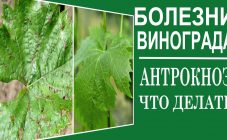Sooner or later, aging awaits every plant. The vine is no exception. Aging periods differ greatly depending on the variety, although, according to biologists, they are calculated for hundreds of years. It is useful for a winegrower to know how to determine the timing of anti-aging pruning, its rules, as well as the criteria for expediency - whether it is worth rejuvenating an old grape bush or it is time to give way to a young seedling.
How to update running grapes
The older a particular bush is, the better the brushes ripen on it. This is a general rule. Everything is explained simply. Throughout its life, grapes continue to grow downward, increasing root mass. This allows the old bushes to draw out their soil with everything they need to form the berries and ripen them. Let's say a plant that is 15 years old is considered very young.
Rejuvenating vine pruning is vital. You cannot let this process take its course. With its help, the ripening time of the crop is shortened, its taste and marketability are improved. Ideally, pick up the pruning shears every year. But even the most neglected bush will respond to care with gratitude.
It is worth knowing that in industrial viticulture it is not customary to destroy old vines. A huge number of examples of this can be found even in Russia. In the famous domestic vineyards, you can find shrubs planted long before the Great Patriotic War.
How to rejuvenate grapes? Formative pruning.
There are four pruning methods:
- Short... After such a formation, only 2-4 eyes will remain on the bush. It is used for radical rejuvenation of old bushes. In subsequent years, work continues until a bush with 40 eyes is obtained. Short pruning of grapes is also performed on the youngest bushes to obtain a well-formed vine. Even an inexperienced beginner can master this technology.
- Average... Leave 5-8 eyes of each shoot, while only about 50 buds remain on the bush arrows. Such pruning increases the frost resistance of the plant and is recommended for execution in the fall for covering varieties.
- Long... On the shoots from their base, 15 buds are left. In total, about 60 buds will remain on the vine. Central Asian varieties (Black raisins, Parkent pink) also respond favorably to very long pruning, when up to 25 buds remain on the shoots.
- Mixed... It is necessary when you need to get a loop from a fruit shoot and a replacement knot. Such a renewal of neglected grapes is carried out to improve the yield of table varieties.
Anti-aging pruning rules
First of all, it is important to remember the timing of pruning neglected grapes. It is impossible to renew the crown when sap flow occurs. In spring, pruning of old grapes is carried out until the buds swell. In the fall - right after all the foliage has completely fallen off. At the same time, you should not wait for frosts. By this time, the plant should be dormant. It is highly advisable to coat large sections with garden pitch, in order to avoid the penetration of diseases and pests.
In summer, only pinching or cutting out parts of the vine damaged by diseases or pests is allowed. Unnecessary shoots are carefully pinched so that the bush does not waste its energy on building up excess green mass. Pinching has another very important function - foliage thinning. If there is too much of it, then the berries get little sun, they will ripen longer.
To understand the process, it is important to understand the terminology:
- Fruit escape they call the youngest parts of the bush, which have leaves, whiskers, ovary. It is on them that numerous stepchildren grow from the leaf axils, which must be pinched. By the fall, such a shoot becomes lignified and turns into a fruit vine.
- Fruit vine- will give fruit shoots from its buds next year. Its optimal thickness is about 10 mm. In three years, the fruit vine turns into a real branch.
- Branches (sleeves) - the oldest parts of the bush, on which there are dormant buds, from which, with a short cut, replacement shoots grow.
Now it becomes clear that the fruits will appear only on the shoots of the first year. The rest of the bush is ballast, which shouldn't be too much. It is insurance that will allow the bush to recover in case of damage to the young growth, but such insurance should not be excessive either.
During the summer, fruit shoots grow to a length of 1-3 m, while a certain number of buds are laid on them. In fact, a new shoot will grow from each bud next year. The task of the grower is to limit this amount to 20 per 1 bush. Every year it is necessary to remove excess fruit shoots and shorten the vines.
Short pruning, when only 3-4 buds are left on fruit vines, are practiced for high-stem and arbor varieties. For standard and standard varieties, medium is practiced, and for strong ones, long is used. Using a short one, you can get a strong impetus for the growth of shoots, and the quality of the harvest after it will be the highest, since there will be few bunches.
Tips and tricks for anti-aging pruning
The best way to imagine how to rejuvenate an old bush of grapes is the example of three years of successive cutting off of all that is superfluous.
2 buds were left on the bush, and the rest was completely removed. During the summer, two fruit shoots grew from the buds, on which up to 20 buds were formed. They are shortened in the fall after complete leaf fall, leaving 2 buds on one and 5-6 on the second. Pruning can be done in the spring, especially if the variety is covering. Then, in the fall, branches without foliage are removed from the trellises, carefully twisted into spirals, laid out on the ground and covered with foil. In the spring, they are examined for the identification of frozen, damaged, dried branches, which are removed first. Further, the intended shortening is performed.
During the summer of the second year, both branches will give vertical shoots, on each of which buds are formed. The tenant's task is to cut off two safety shoots on a long branch, and shorten the remaining fruit shoots to 2 buds. A short branch must be cut off, leaving 2 buds on its two shoots. In the second year, the length of fruit shoots can be very large - up to 3 meters each. Sometimes it's a pity to cut so much. However, pity is not appropriate in this case. Leaving too much will prevent the bush from showing what he is really capable of. The clusters will form skinny with small sour berries.
Pruning in the third year suggests two options for ennobling grapes of different varieties. The short way is for the standard ones, the long cut is for the rest.
The gardener will easily notice how the thickness of the old branches and the head of the bush will grow year after year. This is a natural process. In the oldest shrubs, the base can reach truly impressive sizes. Moreover, from year to year, pruning is carried out according to the same standard scheme. There is no particular reason to change it. This is the only way to get bushes with a large number of fruit shoots that are not thickened with excess green mass.
Now that you know how to prune old grapes, it will be much easier to care for the vine. The grower need not be afraid to remove too much, because rejuvenating the vine is only beneficial. A bush with a strong root system has enough resources to restore its crown from a minimum number of buds. Long pruning of grapes is practiced to form pavilions, so common in the south, where it is important not only to grow crops, but to obtain much needed shade.














